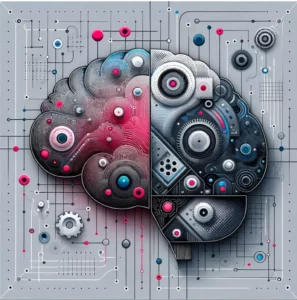Cognitive Assessment

Cyberattacks often exploit human cognitive vulnerabilities as their entry point. Up to 70% of successful cyberattacks leverage these weaknesses, and with the rise of Artificial Intelligence, the human cognitive attack surface is expanding in unprecedented ways.
It is not only the threats introduced by clueless or careless behavior, such as clicking phishing links or executing malware files, but also the cognitive attack surface that extends to executives and management. This includes their lack of awareness of current tactics employed by cybercriminals and the dysfunctional distribution of resources that fail to address the apparent threats.
Cognitive Assessment - Management and Executives
Securing your IT infrastructure starts at the top. Awareness and resources must be allocated at the executive and management levels to control and strengthen cyber defense. Cognitive vulnerabilities within the security management domain can lead to a misplacement of attention and resources, failing to address the current threat landscape. KiviSec’s Cognitive Assessment for management and executives evaluates and re-adjusts the threat perspective to ensure resources are allocated effectively and threats addressed efficiently.
Methodology and Process
- Set objectives and goals of the assessment
- Conducting interviews with key executives and management
- Cognitve Defense Review Meeting
- Strategic Threat Perception Workshop
Our Cognitive Assessment for Management and Executives service helps decision-makers focus their attention and resources on what truly matters.
Cognitive Assessment - AI-powered Social Engineering
Due to advances in Artificial Intelligence, a completely novel approach to penetrating the human cognitive attack surface has emerged. AI models can be trained to produce photo-realistic audio and video content, which can significantly enhance the effectiveness and harm of social engineering attacks. KiviSec helps you evaluate and implement test cases for these types of AI-powered attack vectors to determine if your organization is vulnerable to this emerging threat.
Methodology and Process
- Conduct an initial consultation to understand the organization’s current cybersecurity posture and specific concerns regarding AI-powered attack vectors
- Identify potential AI-powered attack vectors that are relevant to the organization
- Develop and train AI models to produce photo-realistic audio and video content
- Design test cases and attack scenarios using the AI-generated content
- Tailor simulations to reflect realistic attack scenarios that the organization might face
- Execute the AI-powered social engineering attack simulations within a controlled environment
- Analyze the results of the simulations to identify vulnerabilities and weaknesses in the organization's defenses.
By proactively evaluating and testing these AI-powered attack vectors, organizations can strengthen their cybersecurity posture, enhance their resilience against sophisticated attacks, and ensure that their decision-makers are well-informed and prepared. Addressing these threats now not only mitigates current risks but also builds a robust defense mechanism against future, more advanced AI-powered threats, safeguarding the organization’s assets and reputation.
